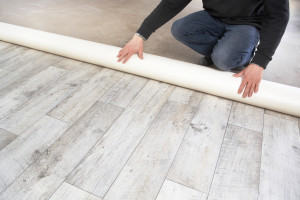There are a number of chemical compounds, which very effectively prevent the temperature-induced degradation of poly(vinyl chloride).As mentioned in the previous articles, metal salts demonstrate the best properties in this respect because they react with hydrogen chloride.Barium, calcium and tin salts as well as organotin compoundsdemonstrate a high efficacy in this respect. These have replaced cadmium and lead salts that were used in the past.Studies have shown that some of these substances are harmful to health and the environment, and therefore the use of cadmium compounds has been eliminated, and the legislation of the European Union has forced its Member States to reduce the use of Pb stabilisers by 50% until 2010 and to eliminate them altogether by 2015.
The temperature range in which pure PVC can be used is from -10 to + 60°C.Stabilized and softened PVC can be used in the temperature range from-30 to + 100 °C.The biggest problems appear in PVC processing.Thermal decomposition of PVC accompanied by hydrogen chloride secretion becomes apparent at 135 °C.In addition, hydrogen chloride which is generated in the presence of airborne oxygen, speeds up the polymer decomposition process to the point that at a temperature of 200 °C, a nearly total breakdown of PVC takes place.
Fission outside of the main chain or a static fission of the main chain may take place during the thermal degradation of vinyl polymers.Aging under the influence of light occurs as a result of absorbed light energy, resulting in polymers undergoing photolysis, oxidation and cross-linking.
PVC products used in atmospheric conditions are exposed to destructive atmospheric factors, such as:UV radiation, precipitation and temperature changes, leading to the physical and chemical aging of the material.Under the influence of UV radiation, free radicals are formed that lead to the fissure of bonds within the PVC chain, separation of hydrogen chloride, and formation of new double bonds, which lead to the yellowing of the plastic.The next stage of degradation involves photo-oxidation leading to the whitening of the material and crosslinking at the expense oxygen bridge formation.
The most characteristic changes caused by degradation include the formation of new C=C double bonds, C=O carbonyl groups, –OH carboxyl groups in the chain as well as the production of hydrogen chloride and carbon dioxide.
The yellowing of the plastic is intensified by high temperature and low humidity.PVC degradation is a complex phenomenon that is primarily the result of dechlorination, a process which varies depending on the stabilizers used. There are two types of PVC degradation:
- initial degradation (occurring under the influence of temperature, so-called thermal degradation) under anaerobic conditions at the molecular or ionic level,
- secondary degradation caused by elevated temperatures and oxygen (thermoxidation).
Currently, the main stabilisers used in PVC include stabiliser mixtures based on metals, as well as organic and organotin stabilizers (mentioned earlier in Characteristics of additives used in the processing of PVC. Part I).It also needs to be added that in order to achieve the desired level of stabilisation of PVC mixtures, so-called co-stabilisers are used, which support the action of the main stabilisers.This group includes:
- phosphate co-stabilisers – (e.g. phenyldidecyl-phosphate (III), which is more effective than pure triacryl phosphate (III)) are used together with metal stearates in order to increase the thermal stability of products and to maintain their colour when used in atmospheric conditions,
- epoxy co-stabilisers – used together with tin stabilisers in order to achieve long-term thermal stability.
The general trend in recent years has been to use Ca-Zn stabilising-lubricating compositions in place of one-pack compositions or stabilisers containing heavy metals.It should be noted, however, that the consumption of Ca-Zn stabilizers is currently only a dozen or so percent of the overall consumption of thermal stabilizers.This is due to their inferior performance compared to Pb or Sn stabilizers, and their higher price.Among the large number of chemical substances used in the stabilisation of PVC, some groups have been around for a long time and are widely used with good results.It is very important to remember however, that even the most effective light and thermal stabilizers will not prevent the complete thermal and optical destruction of PVC. They can only delay these phenomena, making PVC processing possible and protecting the product against rapid aging during its use.

